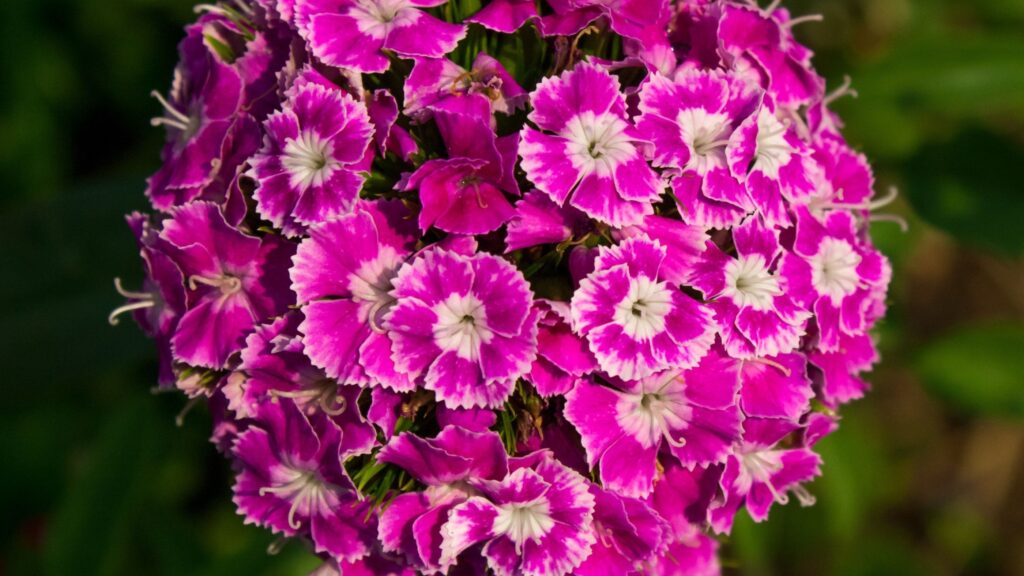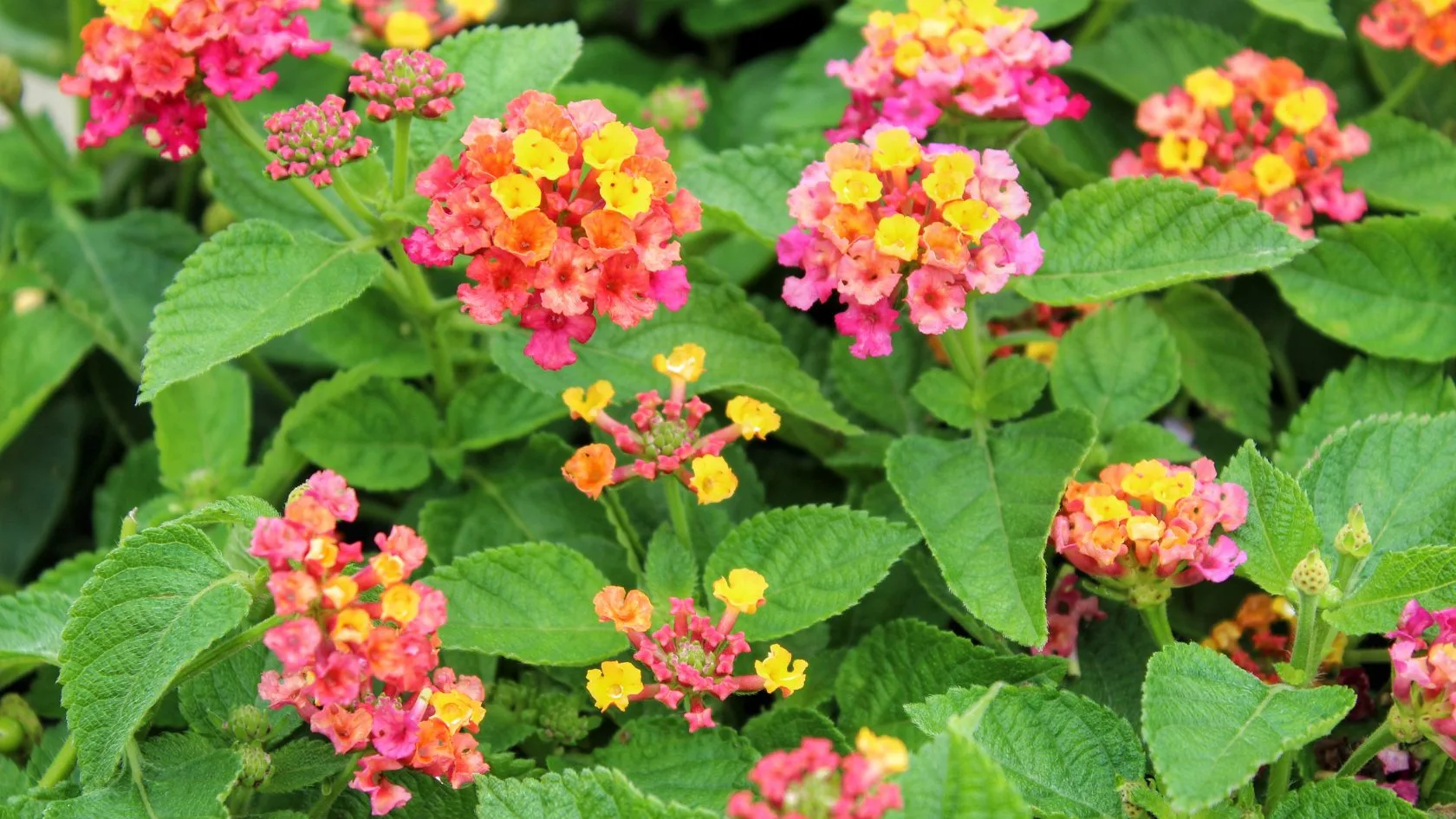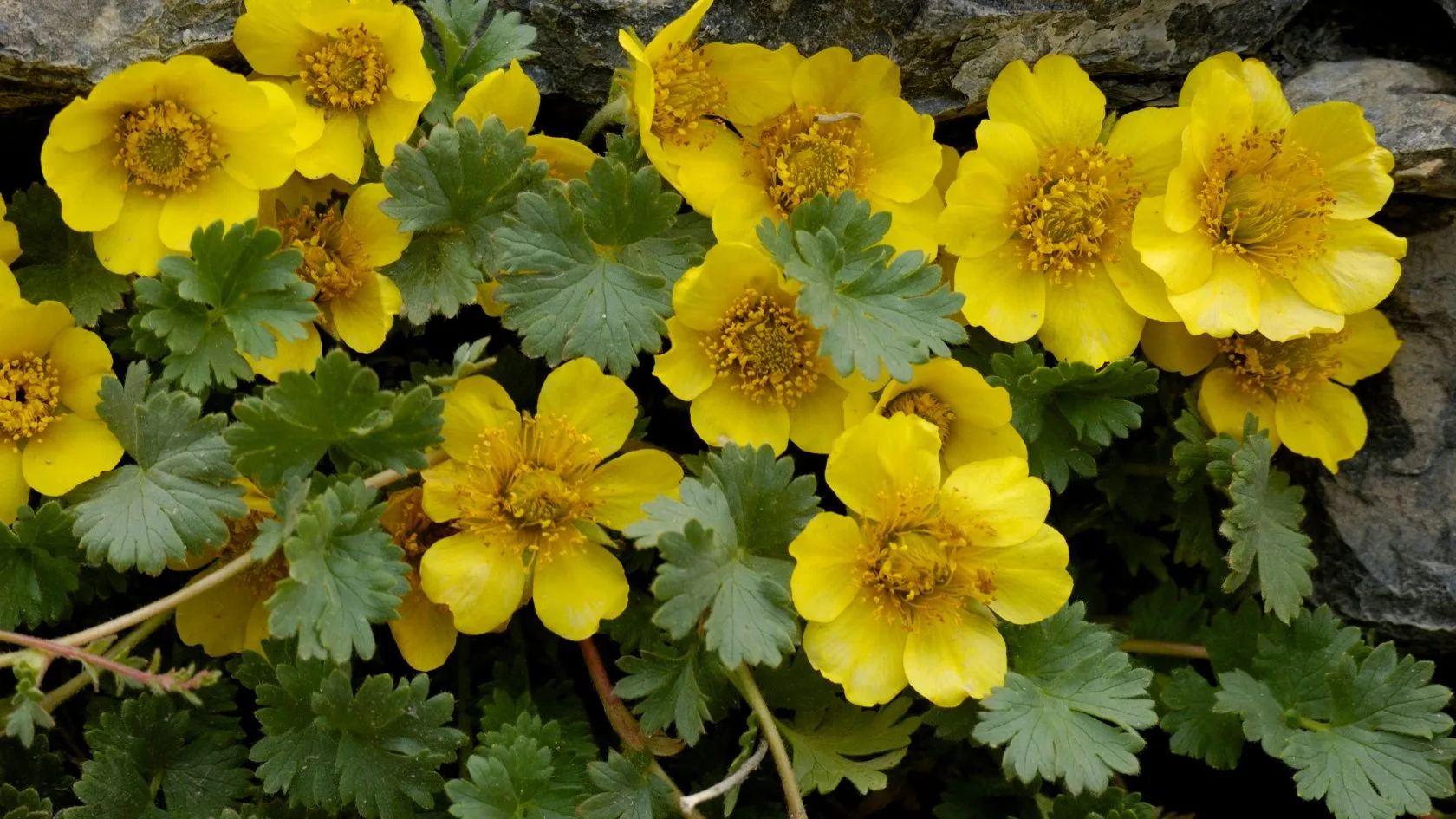Dianthus, commonly known as “pinks,” is a delightful flowering plant that comes in various forms. Dianthus works well as a border plant, in containers, rock gardens, or en masse in garden beds.
Dianthus Flowers Varieties
Here are some perennial dianthus varieties, each with its unique charm:
- Dianthus Hybrid:
- These magenta beauties are dwarf flowers with a mounding habit.
- Height: About 8 inches tall (some even shorter).
- Width: Up to 14 inches.
- Hardy in zones 4 – 9.
- Tolerates heat.
- Best planted under full sun to partial sun conditions.
- Bloom time: Early summer and a comeback in fall.
- Crowned as the 2022 National Perennial of the Year.
- Dianthus ‘Candy Floss’:
- Alluring pink perennial flowers.
- Double pale pink flowers with purple-red markings near the centers.
- Beautiful scent.
- As they mature, petals transition into a darker shade of pink.
- Compact and free-flowering, perfect for rock gardens.
- Hardy in zones 5 – 9.
- Height: Up to 30 cm (about 12 inches).
- Dianthus deltoides ‘Arctic Fire’:
- Features a contrasting “eye” (center) more commonly found in biennial varieties.
- A lovely addition to your garden.
- ‘Bailey’s Celebration’:
- Hardiness: USDA 6b/7a.
- Height: 14 inches (35 cm).
- Spread: 18 inches (45 cm).
- Showy double flowers with white petals irregularly splashed with pink.

Dianthus Green Ball
The Dianthus Green Ball is a unique flowering plant that produces perfectly round, fuzzy, lime green flowers, up to 3 inches across (7 cm), in late spring and summer. The vivid blossoms rise on stiff, erect stems clad with long, glossy, dark green leaves. This hardy annual or short-lived perennial is a charming addition to beds and containers, and is also prized by florists for its long vase life (up to two weeks) and ability to be dried.
Dianthus Caryophyllus
Dianthus caryophyllus, commonly known as carnation or clove pink, is a species of Dianthus native to the Mediterranean region. The term dianthus was coined by the Greek botanist Theophrastus and is derived from the Ancient Greek words for divine (“dios”) and flower (“anthos”).
Dianthus Barbatus
Flowers: Clusters of small, fragrant blooms in shades of red, pink, white, and purple, with fringed edges. Size: Grows 12-36 inches (30-92 cm) tall depending on variety. Lifespan: Technically a biennial (2 year life cycle) but often grown as an annual. May reseed itself in ideal conditions. Sun: Prefers full sun but tolerates some afternoon shade in hot climates. Soil: Needs well-drained soil, fertile and slightly alkaline is ideal. Uses: Popular ornamental plant for borders, containers, and attracting pollinators like butterflies and hummingbirds. Flowers can be used in cut flower arrangements.
Growing Dianthus Seeds
here’s a step-by-step guide to successfully cultivate these charming blooms:
- Prepare the Soil:
- Dianthus seeds need well-drained soil that is rich in organic matter. If your soil isn’t well-drained, consider adding compost or sand to improve drainage.
- Tilling the soil to a depth of about 6 inches will create a suitable planting bed.
- Sow the Seeds:
- Dianthus seeds are tiny, so sow them thinly. You have two options:
- Direct Sowing: Plant the seeds directly in the ground where you want them to grow.
- Indoor Starting: If you’re starting them indoors, use seed trays filled with sterile potting mix. Sow the seeds about 1/4 inch deep and cover them with a thin layer of soil.
- Keep the soil moist but not wet during germination, which usually takes 2-4 weeks.
- Dianthus seeds are tiny, so sow them thinly. You have two options:
- Thin the Seedlings:
- Once the seedlings emerge, thin them so they are about 6 inches apart. This spacing allows each plant enough room to thrive.
- Fertilize:
- Dianthus plants benefit from a light application of fertilizer once a month. This helps support healthy growth and abundant blooms.
- Water Regularly:
- Dianthus plants need regular watering, especially during dry spells. Keep the soil consistently moist but avoid overwatering.
- Deadhead the Flowers:
- As the dianthus flowers fade, deadhead them regularly. Removing spent blooms encourages new growth and prolongs the flowering season.



That is the appropriate weblog for anyone who needs to seek out out about this topic. You notice so much its almost onerous to argue with you (not that I truly would want…HaHa). You definitely put a new spin on a subject thats been written about for years. Great stuff, simply great!
What’s Taking place i’m new to this, I stumbled upon this I have discovered It absolutely helpful and it has helped me out loads. I’m hoping to contribute & help different users like its helped me. Good job.